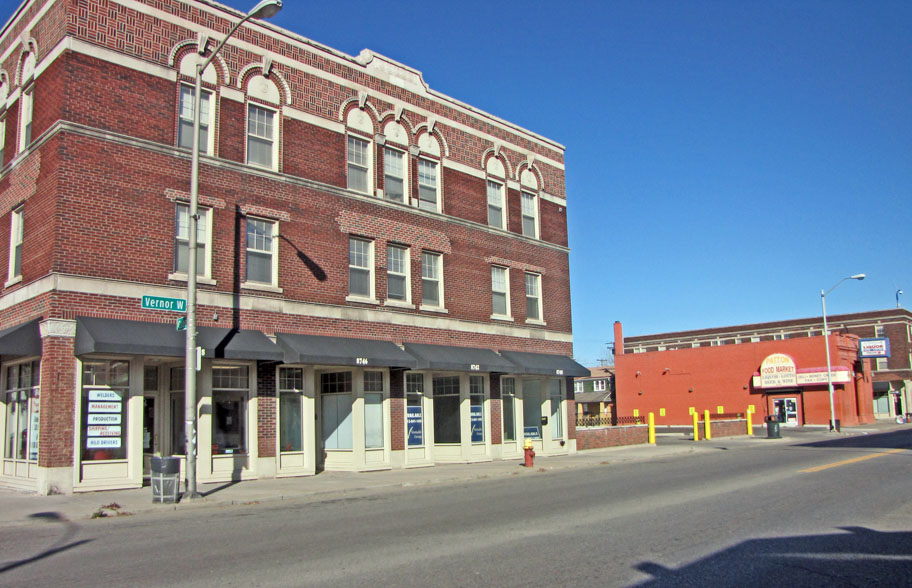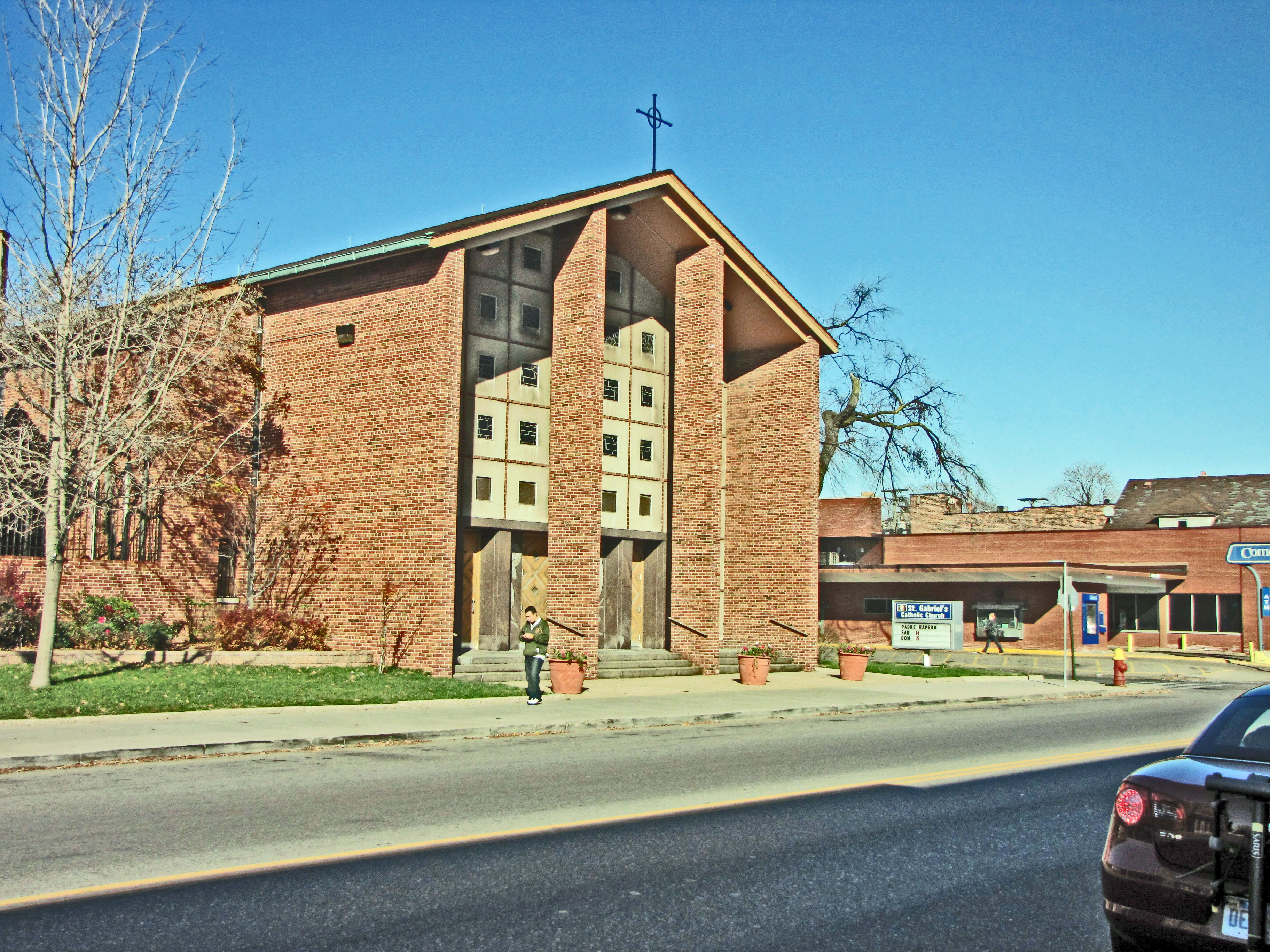

Three commercial districts along West Vernor Highway date from the early decades of the last century and are listed on the National Historic Register. The West Vernor -Junction district is closest to downtown Detroit and largest with the Holy Redeemer Church complex as its anchor. The West Vernor-Lawndale district is smallest and closest to Dearborn. The one in the middle is the West Vernor-Springwells Historic District shown in the picture above. It bears the name Springwells because that is its major street intersecting West Vernor in this historic area.
-Junction district is closest to downtown Detroit and largest with the Holy Redeemer Church complex as its anchor. The West Vernor-Lawndale district is smallest and closest to Dearborn. The one in the middle is the West Vernor-Springwells Historic District shown in the picture above. It bears the name Springwells because that is its major street intersecting West Vernor in this historic area.
The early French settlers in this area gave it the name Belle Fountaine because their wells consistently drew pure and abundant water. Lewis Cass served as territorial governor and was concerned with the important matters of establishing local governments. French was, presumably, the dominant European language in the Michigan Territory until after the War of 1812, but then English speakers became demographically dominant. Translating from the French, Territorial Governor Cass established Springwells Township on January 5, 1818. However, another decade passed before the exact boundaries of the township were agreed upon.

Population growth in the southern half of Wayne County, led residents of Springwells Township to create their own local governmental units, including villages and new townships. As early as the 1850s, Springwells Township began losing area. The city of Detroit annexed a substantial fraction of the township before World War I. I believe that Springwells Township became extinct in 1928. A settlement along the Michigan Central Railroad in present day Dearborn was founded in 1837.and was served by a post office. In 1921, this area was incorporated as Springwells village. Four years later, residents changed the name to Fordson. Fearing they might be annexed by the city of Detroit, residents of Fordson merged their community with Dearborn in 1928, effectively making Springwells a defunct township.
This West Vernor historic district is distinguished from the other two West Vernor historic districts by two trellises that span the highway. I presume these were designed to bring attention to the shopping opportunities located here, but they are not very impressive or eye catching. The renovation of Washington Boulevard in downtown Detroit in the 1970s led to the erection of an elaborate set of tinker-toy like trellises above that thoroughfare. They received extreme ly little praise and so you may find it challenging to locate an old picture of Washington Boulevard with the trellises that once extended from Grand Circus Park to Michigan Avenue. Early in his administration, Mayor Kilpatrick had the unbecoming apparatus removed from Washington Boulevard. Those on West Vernor remain in place.
ly little praise and so you may find it challenging to locate an old picture of Washington Boulevard with the trellises that once extended from Grand Circus Park to Michigan Avenue. Early in his administration, Mayor Kilpatrick had the unbecoming apparatus removed from Washington Boulevard. Those on West Vernor remain in place.
There are 28 building in this historic district. Most of them are two-story structures with a commercial establishmenets on the ground floor and an apartment or two on the upper level. Many of them were constructed between about 1900 and the mid-1920s, although a few of them may be reconstructions of buildings that date from the Nineteenth Century. They illustrate the type of urban constructions that served the neighborhoods of rapidly growing cities in the pre shopping center era. Most—but not all—of the stores and restaurants in  this historic district were open in 2009, serving the needs of the largely Hispanic population of this section of Detroit.
this historic district were open in 2009, serving the needs of the largely Hispanic population of this section of Detroit.
City of Detroit Designated Historic Districts: Not listed
State of Michigan Registry of Historic Sites: Not listed
National Register of Historic Places: #02001502, Listed in 2002
Use in 2009: Commercial and Residential area
Photograph: Ren Farley, November, 2009
Description prepared: December, 2009
Return to Michigan Registered Historic Districts
Return to Homepage